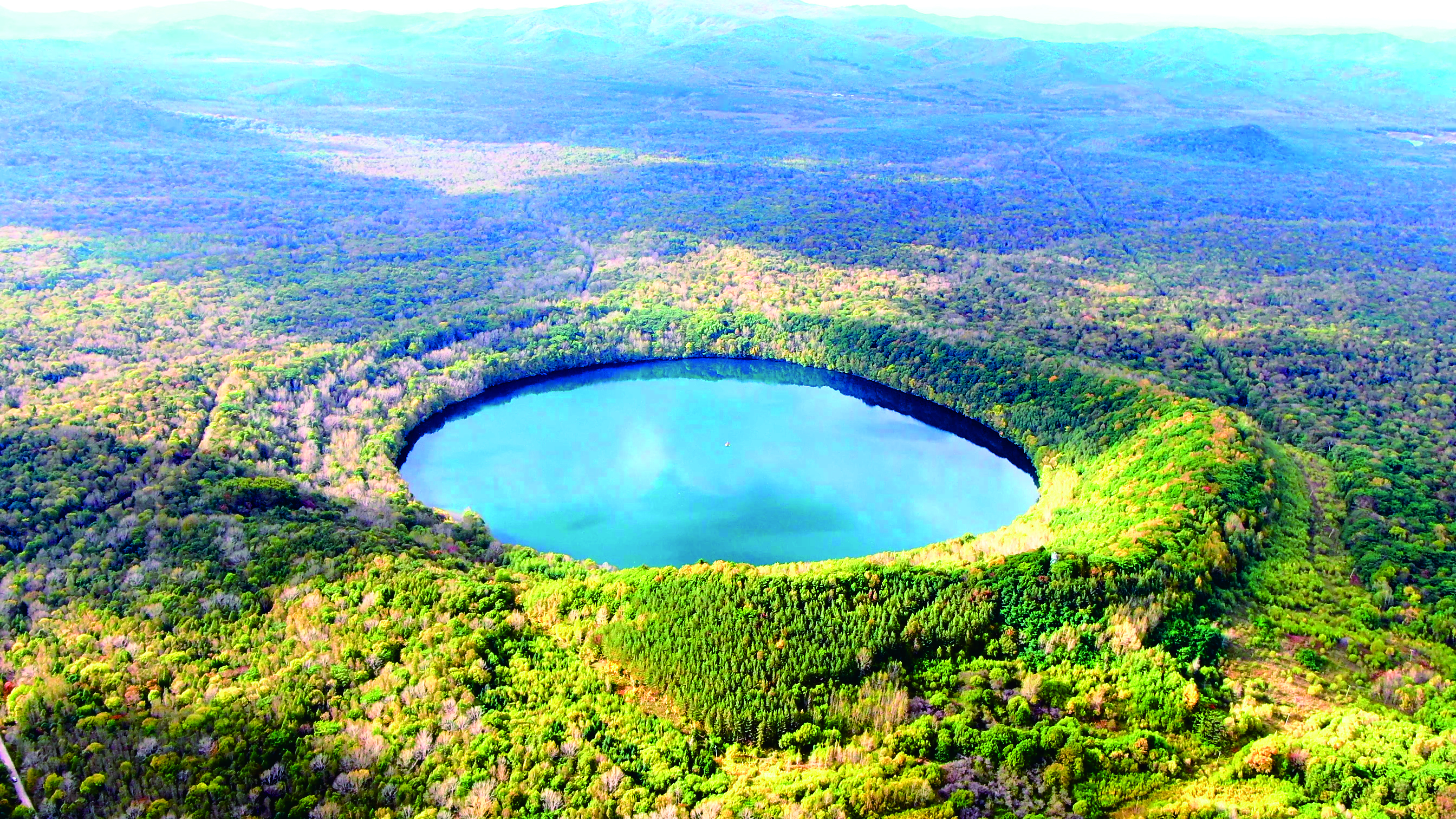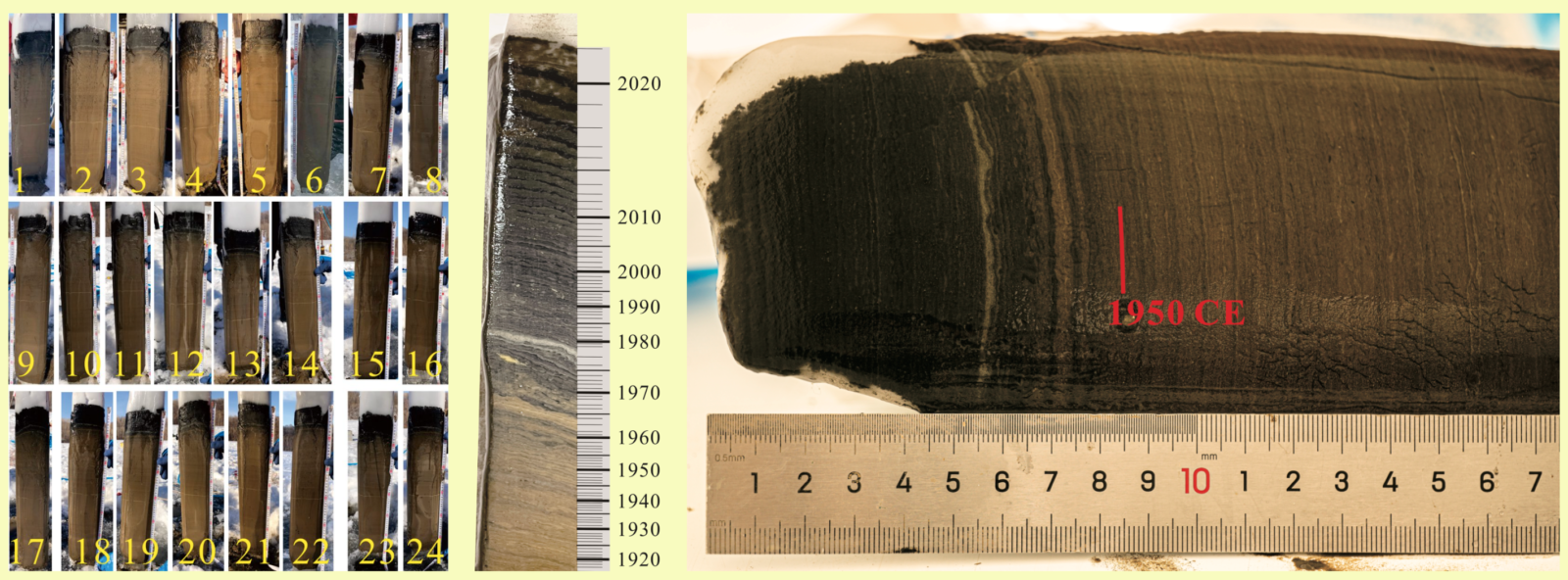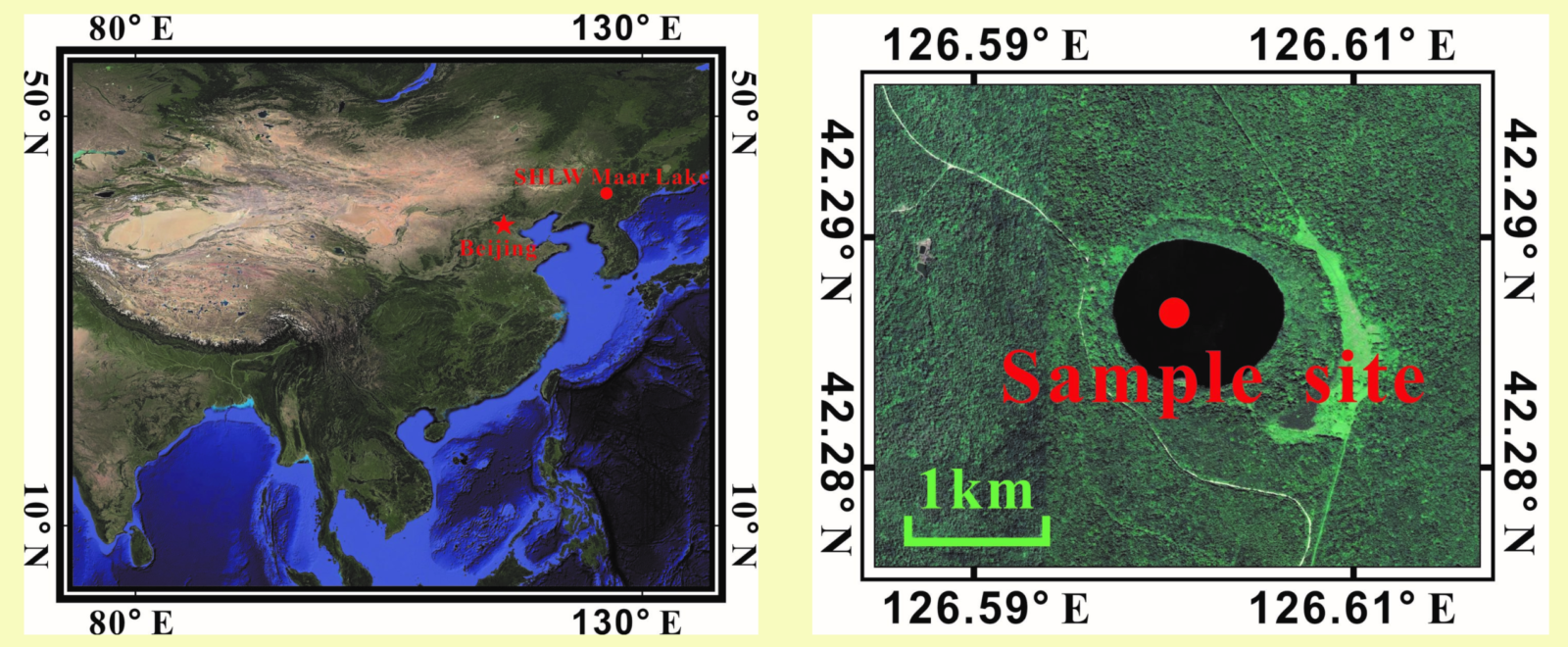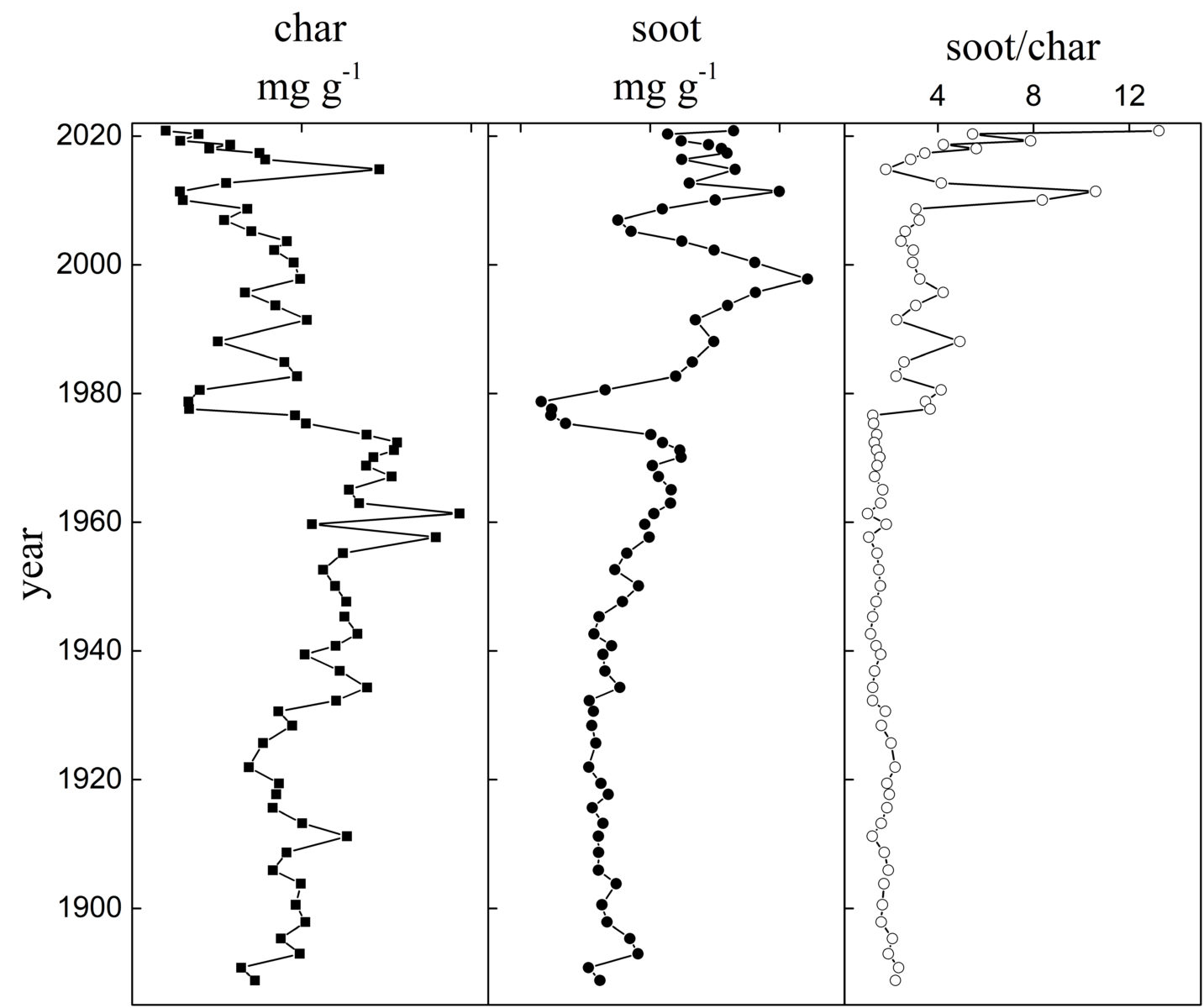Sihailongwan Lake, China

Site Introduction
Sihailongwan Lake is a low-rimmed volcanic crater lake (or maar1 lake) in Jilin province in northeastern China. It is a round lake with a diameter of 750 meters, is relatively deep for its size (with a maximum depth of fifty meters), and is located 797 meters above sea level in the plateau-like landscape of the Longgang volcanic field. The volcanic field, which covers 1,700 square kilometers, is a result of tectonic plates colliding: the Pacific Plate is being thrust beneath the Eurasian Plate, an action that results in volcanic activity. This activity has produced 164 volcanic centers in the area (crater lakes, maars, and cones), with the most recent eruption—from the Jinlongdingzi volcano, fifteen kilometers south of Sihailongwan Lake—occurring in the year 460 CE. Today, the area is covered in a dense conifer and broadleaf forest (the previous Korean-pine-dominated forest was destroyed by long-term human activities). Sihailongwan Lake is accessible via a paved road from the nearest town of Jingyu (population around 100,000), which is around thirty kilometers northeast of the site.
Since Sihailongwan Lake was formed in a volcanic crater, it has no tributary or outlet rivers. It is fed by rainwater—mainly during the East Asian monsoon season from June to September when 500–800 millimeters falls—and some groundwater. The landscape is made up of Quaternary2 alkali basalt, a fine-grained, dark-colored, volcanic rock.
There are traces of human agricultural practices in the region that is today Jilin province dating back 8,000 years, with evidence that it was one of the origin places for dry farming. Because of the province’s substantial shale and mineral reserves, its modern economy has been characterized by heavy industry. However, the Longgang area is protected; since 1991, it has been a designated 8,102-hectare forest park: the Jilin Longwan National Natural Reserve.
Location of the Sihailongwan Maar Lake in China, and the coring location in the lake, the diameter of which is about 750 meters. Images by Yongming Han © All Rights Reserved
Location of the Core
The formation and characteristics of maar lakes produce favorable conditions for the accumulation of seasonally distinct layers of sediment called varves.3 Because Sihailongwan Lake is relatively deep for its surface area, and because it does not have any inflows or outflows, anoxic4 conditions occur in the bottom layer of water. This means that the matter that falls and settles on the lake bed remains undisturbed, enabling the preservation of a continuous record of environmental and climatic conditions. The varves are composed of a dark-colored, diatom-rich5 layer formed during summer and fall and a light-colored siliciclastic6 layer, which is likely deposited after the spring ice thaw. These distinct layers allow scientists to apply a high-resolution age scale to the cores, cross-referenced with dates of nuclear bomb testing. Wind conditions mean that the area receives windborne material from northern and northwestern China, which composes the majority of the sediment deposited in the lake, making it sensitive to long-range signals. This long-range sensitivity and the precise chronology enabled by the distinct varves make the Sihailongwan core a good GSSP7 candidate.
The Longgang volcanic field has several maar and crater lakes of varying age—including geologically young, deep lakes such as Sihailongwan Lake, and older lakes that are filled in and dried up—which provide a range of sediment records for analysis, allowing results to be cross-checked across the well-studied region.
Forest in the Jilin Longwan National Natural Reserve. Photograph by Rolfmueller, Wikimedia Commons, CC BY-SA 3.0
The Core and Results
The Sihailongwan cores show clear laminated varves, with a very dark layer in the top five centimeters (perhaps a result of decreasing dissolved oxygen concentrations over time). Mixed yellowish and dark layers occur between five and nine centimeters, which become gradually lighter with depth. In addition, there are three distinct light layers at around 5, 7.5, and 30.5 centimeters, which are composed of siliciclastic minerals.8
The cores record an overall increasing trend of soot, mercury, and spheroidal carbonaceous particles (SCPs)9—all from fossil combustion—since 1950. Concentrations of these pollutants decreased from the late 1990s and early 2000s. This likely relates to air pollution control activities in China; for example, the implementation of a desulfurization subsidy from 2004, which incentivized coal plants to reduce their sulfur emissions, and the Air Pollution Prevention and Control Law from 2012, which held local governments accountable for improving air quality.

Plutonium-239/240 and caesium-137 begin to increase at 8.8 centimeters (around 1953) and peak at 7.7 centimeters (around 1963) and 7.9 centimeters (around 1964), respectively, recording the global nuclear fallout maximum from the “Bomb Pulse”10 in 1963–4. The earlier plutonium peak may be related to the fact that plutonium is less stable than caesium in water. Iodine-129 has a different profile, beginning to increase at around 8.8 centimeters (1950 ± 3 CE) and continuously increasing with large fluctuations until 4.4 centimeters. From 4.4 centimeters depth upwards (early 1990s to 2021), it decreases and then rapidly increases. The variation is related to the global fallout of atmospheric nuclear weapons tests and long-term emissions of European nuclear fuel reprocessing plants via long-distance air transport to East Asia by the westerly winds. No signal from the Chernobyl disaster is found in the cores.
The Sihailongwan cores have similar profiles to those taken from Huguangyan Maar Lake in Guangdong province in southeastern China, which supports the idea that both lakes record atmospheric deposition of long-range pollutants.
Collection and Analysis
Twenty-four freeze cores with lengths of fifty to eighty centimeters were collected from Sihailongwan Lake in February 2021, using a freeze corer. The cores were collected during winter so that scientists could work directly on the frozen lake without the need for a platform. They drilled a hole through the seventy-centimeter-thick surface ice and lowered the coring wedge to the lake floor. The cores were packaged and transported back to the Institute of Earth Environment, Chinese Academy of Science in Xi’an. The cores were subjected to the following analyses: micro-X-Ray-Fluorescence (XRF)11 scanning; magnetic susceptibility; chronological dating with varve counting and lead-210; caesium-137 analyses; mass accumulation rates; nuclides of plutonium and iodine isotopes; organic carbon and total nitrogen concentrations and their stable isotopes; black carbon, char, and soot concentrations; soot carbon-14; SCP concentrations; polycyclic aromatic hydrocarbons (PAHs)12 and oxygenated PAHs; heavy metals (lead, copper, zinc, and cadmium); and mercury concentrations and isotopes.
The Research Team
The Sihailongwan Lake research team is led by principal investigator Yongming Han, from the State Key Lab of Loess and Quaternary Geology, Institute of Earth Environment, Chinese Academy of Sciences (CAS). The Anthropocene GSSP research of this team was initiated by Zhisheng An, who is a member of CAS and a foreign associate of the US National Academy of Sciences, USA. An and Han are members of the Anthropocene Working Group (AWG). In the late 1980s and 1990s, this group focused on the study of natural changes of the Quaternary climate and environment. They reconstructed historical Quaternary climate changes at different time scales (from tectonic to annual variations) using geological and biological records (such as loess, lake and marine sediments, stalagmite, coral, Trina, and tree rings) using numerical simulation to understand dynamics. Gradually, they recognized the importance of human impacts on global climate and Earth systems and An proposed a shift of research focus from natural processes to the interactions between human beings and natural processes in 2006. Since then, they have focused on human impacts on climate, environment, and Earth systems, as well as predicting future climate. In 2019, the team gained major project funding from the National Natural Science Foundation of China to research the characteristics, impacts, and dynamics of the Anthropocene in China. Various geological and biological indicators are used to reflect the history of human impact in the country. In January 2022, the group formally established an Anthropocene division of the Geological Society of China, which includes over sixty members from various universities and scientific research institutes in China.
Principal investigators (listed alphabetically):
Yongming Han, Institute of Earth Environment, Chinese Academy of Sciences
An Zhisheng, Institute of Earth Environment, Chinese Academy of Sciences
Contributing Scientists/Researchers (listed alphabetically):
Yunning Cao, Institute of Earth Environment, Chinese Academy of Sciences, Organic Carbon stable isotope analysis
Uli Dusek, Energy and Sustainability Research Institute Groningen, Soot carbon-14 analysis
Xuewu Fu, Guiyang Geochemistry Institute, Chinese Academy of Sciences, Hg concentration and Hg isotope analysis
Jing Hu, Institute of Earth Environment, Chinese Academy of Sciences, Nitrogen stable isotope analysis
Jianghu Lan, Institute of Earth Environment, Chinese Academy of Sciences, Freeze coring, lead-210 and caesium-137 analysis
Dewen Lei, Institute of Earth Environment, Chinese Academy of Sciences, Freeze coring, varve dating analysis
Bo Liu, Institute of Earth Environment, Chinese Academy of Sciences, XRF core scanning
Sarah Roberts, University College London, SCP analysis
Yalan Tang, Institute of Earth Environment, Chinese Academy of Sciences, Varve dating analysis
Huan Yao, Institute of Earth Environment, Chinese Academy of Sciences, Sample pre-treatment and black carbon pretreatment
Luyuan Zhang, Institute of Earth Environment, Chinese Academy of Sciences, Iodine isotope analysis
Xue Zhao, Institute of Earth Environment, Chinese Academy of Sciences, Plutonium isotope analysis
- Research Group website
Chu, Guoqiang, Jiaqi Liu, G Schettler, Jiaying Li, Qing Sun, Zhaoyan Gu, Houyuan Lu, Qiang Liu, and Tungsheng Liu. 2005. “Sediment Fluxes and Varve Formation in Sihailongwan, a Maar Lake from Northeastern China.” Journal of Paleolimnology 34 (3): 311–24. https://doi.org/10.1007/s10933-005-4694-0.
Han, Yongming, Zhisheng An, Richard Arimoto, Colin N Waters, Tobias Schneider, Peng Yao, Eirini Sarli, Weijian Zhou, Li Li, and Ulrike Dusek. 2022. “Sediment Soot Radiocarbon Indicates That Recent Pollution Controls Slowed Fossil Fuel Emissions in Southeastern China.” Environmental Science & Technology 56 (3): 1534–43. https://doi.org/10.1021/acs.est.1c05424.


























